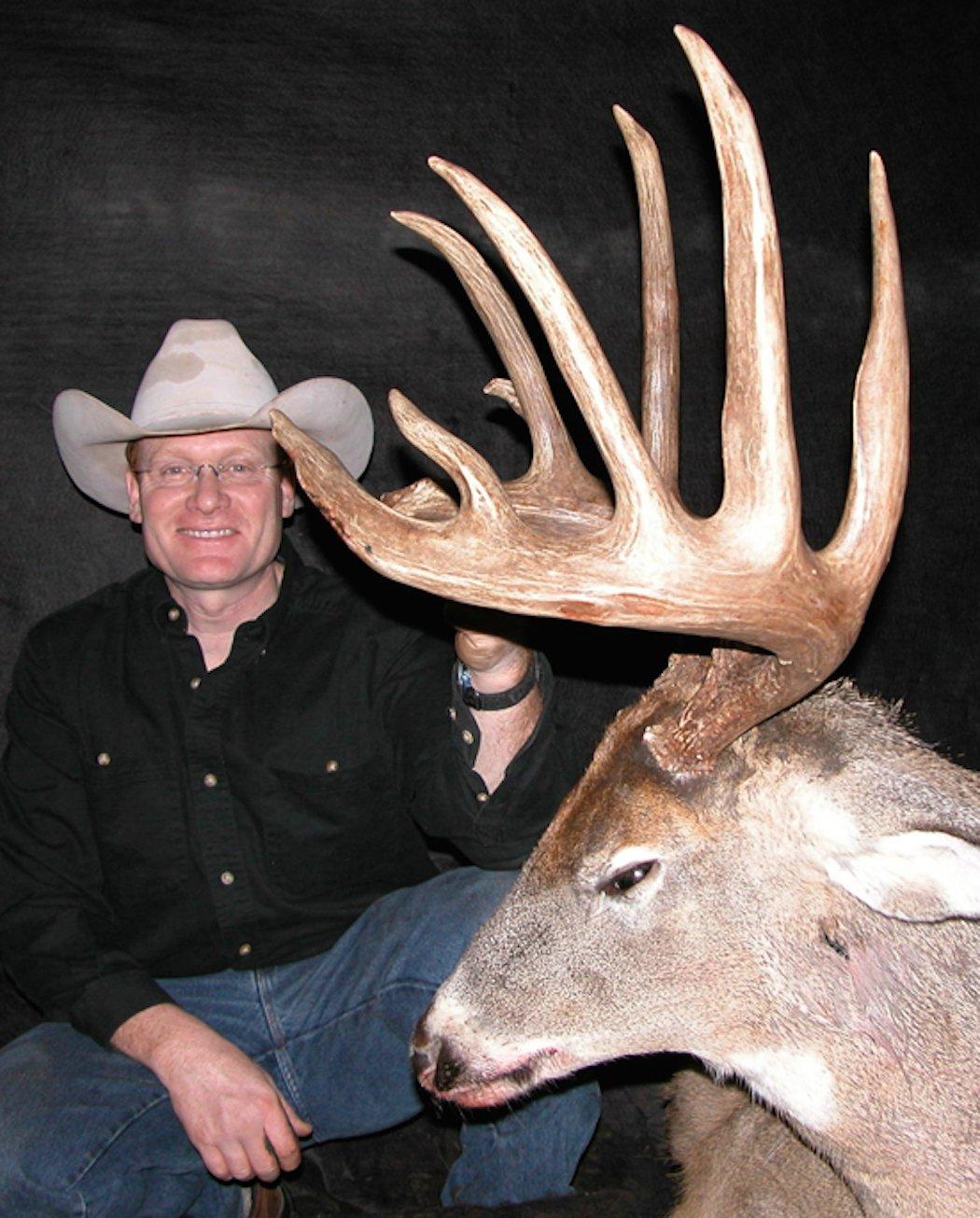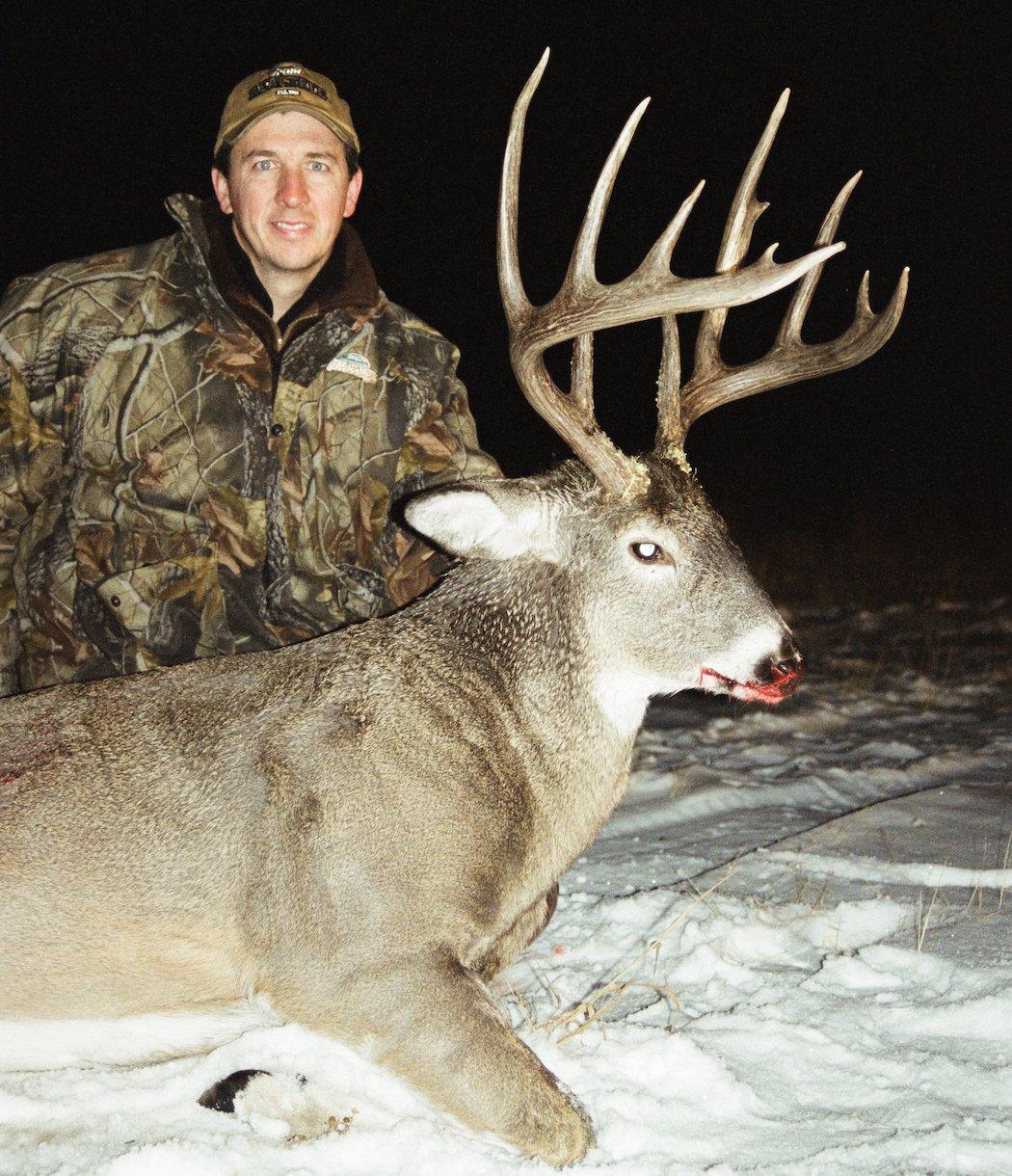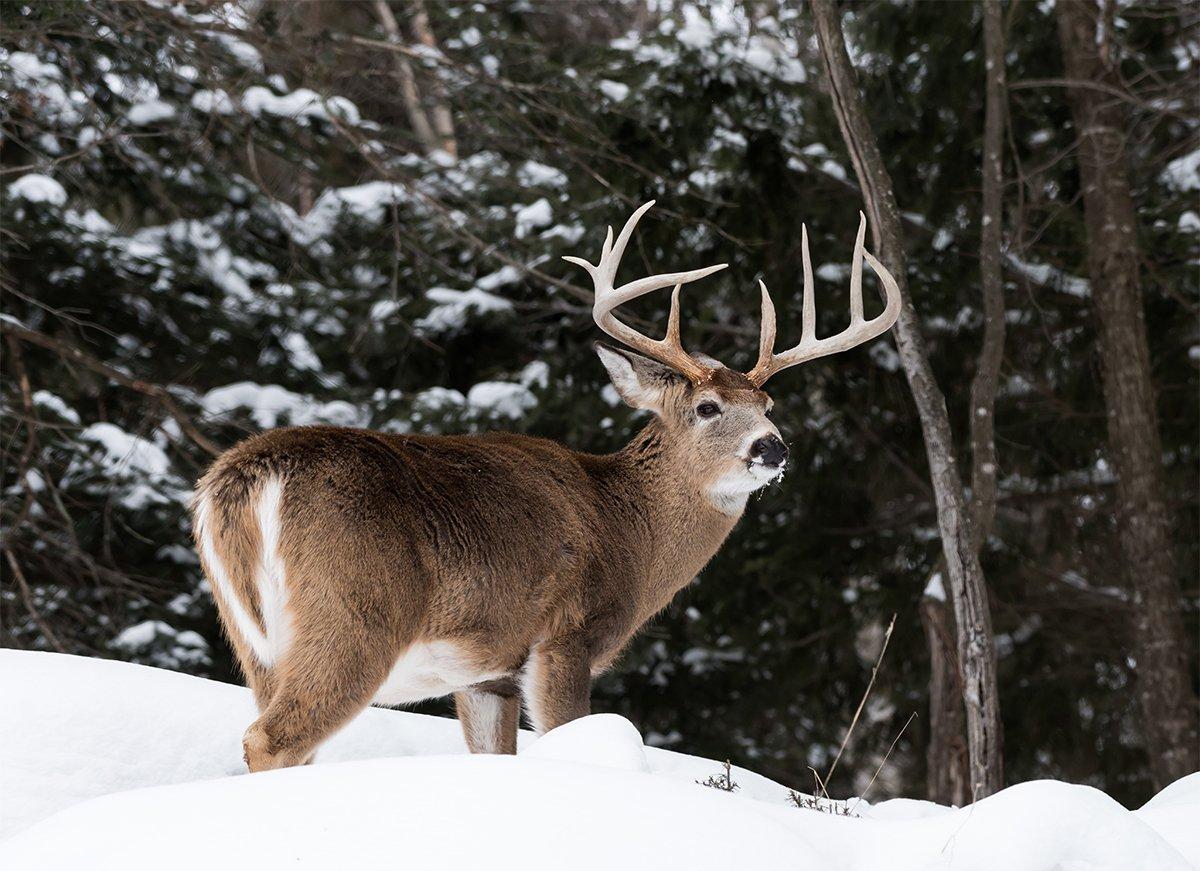Have You Ever Deer Hunted in Canada?
Alberta whitetails can exceed 300 pounds with antler size to match. If you're considering this world-class trophy, here's what you need to know.
White-tailed deer are the most popular big-game animal in America. So, one might ask, Why travel to Canada to hunt one? Antler and body size are key factors. Large bodies are necessary to survive the brutal winters. And those enormous antlers fill the dreams of many hunters. Who doesn't want to kill a giant-bodied deer with awesome headgear?
Ron Nemechek has been a professional whitetail guide in Alberta for 40 years and believes he's figured out the best ways to take a giant buck.

Nemechek recommends posting 100 yards back into the woods to catch bucks that are too wary to emerge in daylight.
Nemechek believes that two pieces of technology have dramatically changed deer hunting in Alberta.
Trail cameras have made a huge difference in the ability to read which bucks use specific trails, Nemechek said. Especially when hunting near the edge of a field, it's important to predict the exact entrance point.
It's also important to use good entry and exit routes.
Once you blow deer from a field, their patterns will change, Nemechek said. It does no good to hunt a morning stand if deer see you on the way in. Likewise, with an evening stand, you need an exit strategy. If a buck enters a field too far from your stand, be prepared to leave in a manner that you don't spook it.
As for timing, Alberta's rifle season runs the full month of November. Some outfitters divide their hunts into four segments, yet Nemechek prefers to hunt the last three weeks of the month to capitalize on the peak of the rut.
The truth never changes, whether warm weather, snow or rain, he said. It doesn't make a difference. Our deer breed between the 8th and 10th of November. You will always see activity by the 10th.

Nemechek doesn't believe that breeding cycles change, only the conditions of the period.
Hunters often say, 'It was a slow rut and I didn't see many deer,'" Nemechek said. If it's a warm year with lots of feed, you must look at things differently. In years of good weather and abundant food, deer are scattered. It may seem slower. When people think of a good rut, it's often so cold that the best feed concentrates does. The bucks will be in those spots and you'll see a lot of them. It doesn't change in our backwoods or yours.
If you are looking for that buck-of-a-lifetime, hunting in Alberta can dramatically boost your odds of taking a giant. Check out the hunts offered by auction and you can take that critical first step today.
Nemechek is one of hundreds of outfitters exhibiting this week at the annual Safari Club International Convention and I talked with him for his ideas about deer hunting in Alberta. Check www.showsci.org to attend the convention and https://auction.safariclub.org/auctionlist.aspx to bid on hunts from Canada and around the world.
Don't Miss: 20 Deer Hunting Lies Your Granddaddy Told You
Are you a deer hunter wanting to learn how to accomplish your goals? Check out our stories, videos and hard-hitting how-to's on deer hunting.







